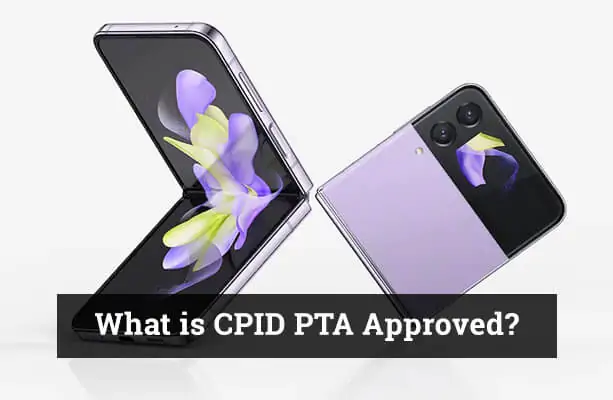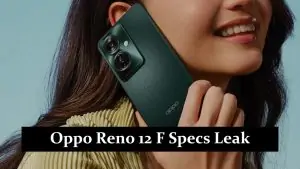In Pakistan, the Pakistan Telecommunication Authority (PTA) plays a crucial role in managing the regulatory aspects of telecommunications, including mobile phone registration and security. One of the important processes related to mobile phones is the IMEI (International Mobile Equipment Identity) repair. While IMEI repair is commonly necessary when a phone is blacklisted or blocked, the introduction of the CPID PTA-approved method has made this process much more efficient and transparent.
If you’re unfamiliar with CPID or IMEI repair, you’re not alone. In this article, we’ll break down the CPID PTA-approved method and explain how it works to help you repair or resolve issues related to your mobile phone’s IMEI in a legal, official manner.
What is CPID PTA Approved?
CPID stands for Cellular Product Identification. It’s a unique identification number that is linked to mobile phones when they are registered with the Pakistan Telecommunication Authority (PTA). The CPID helps the PTA keep track of smartphones, ensuring that they are legally imported and registered in Pakistan.
The CPID PTA Approved system is an official method used for IMEI repair or updating the registration of mobile phones. This process is especially useful for cell phones that were mistakenly blacklisted or are facing issues due to incorrect IMEI registrations.
Why Do You Need IMEI Repair?
There are several reasons why a phone might need its IMEI number repaired or updated. These reasons include:
- Blacklisted Phones: Phones that have been reported as stolen or lost may have their IMEI blacklisted, preventing them from being used on local networks.
- Incorrect IMEI: Phones that have been imported illegally or have been tampered with might have invalid or duplicate IMEI numbers.
- IMEI Mismatch: Phones bought from overseas often require proper registration with the PTA for use in Pakistan.
- IMEI-related Issues: Occasionally, issues such as network compatibility problems, performance issues, or software errors may arise due to discrepancies related to the IMEI.
Using the CPID PTA Approved method, you can address these issues and ensure local networks recognise your phone’s IMEI.
How Does CPID PTA Approved Work for IMEI Repair?
The CPID PTA-approved method enables mobile phone users in Pakistan to officially repair or update their IMEI through the PTA’s database. This process is much safer and more transparent compared to unofficial third-party repair services.
Here’s how the CPID system works for IMEI repair:
- Verification: The device is verified by the PTA system using the CPID number to ensure that it has been legally imported and registered.
- IMEI Repair Process: If the phone’s IMEI is invalid, blacklisted, or mismatched, users can initiate an official repair process via the PTA’s DIRBS (Device Identification Registration and Blocking System).
- Activation: After the IMEI repair, the phone’s IMEI number is officially updated in the PTA system, allowing it to be used on all local networks.
This method offers a legal and regulated solution for resolving IMEI-related issues, providing users with peace of mind, knowing that their phones will comply with local laws.
Benefits of CPID PTA Approved IMEI Repair
- Legality: The CPID PTA-approved method ensures that your device is registered and compliant with PTA regulations. This helps avoid any legal issues related to unregistered devices.
- Network Accessibility: Once repaired and updated, your device will be able to access all local networks without issues, ensuring smooth operation.
- Transparency: Since the PTA officially supports the process, users can be assured of its legitimacy, unlike some unauthorised repair services.
- Safety: By using the official PTA-approved method, users can avoid the risks associated with third-party services that may cause further issues or damage to their devices.
Where Can You Use the CPID PTA Approved IMEI Repair Service?
The CPID PTA Approved service can be accessed through the PTA’s DIRBS system. You can visit the PTA’s official website or use the My PTA app to initiate the repair process. Alternatively, you can visit a PTA-approved service centre where professionals will guide you through the IMEI repair process.
Steps to Check and Repair Your IMEI via PTA
- Check IMEI Status:
- Send your IMEI number via SMS to 8484 to check its status. You’ll receive an SMS with details regarding whether your phone is PTA-registered or blacklisted.
- Initiate IMEI Repair:
- If your phone’s IMEI is blacklisted or mismatched, visit the DIRBS portal on the PTA website to start the repair request.
- Verification and Processing:
- Submit the necessary documents and follow the verification process. Once your IMEI is successfully repaired, your phone will be cleared for use on all networks.
Important Points to Remember
- IMEI Repair Cost: Charges may be incurred depending on the type of repair required, which varies by device model and repair process.
- Timeframe: The IMEI repair process may take a few days to complete. Be sure to keep track of the status through the PTA system.
- Legal Use: Once the IMEI is repaired and updated, your device will be eligible for legal use within Pakistan.
Conclusion
The CPID PTA Approved method is an innovative and official solution for repairing your phone’s IMEI. Whether you’re dealing with a blacklisted phone, mismatched IMEI, or any other registration issue, this method ensures a safe, legal, and hassle-free resolution. By following the steps outlined by the PTA, you can enjoy full network access and ensure your phone is compliant with Pakistani regulations.
FAQ’s
What is CPID about PTA approvals?
CPID (Cellular Product Identification) is a unique method used for IMEI repair. When a phone is CPID PTA-approved, it means the device's IMEI complies with PTA regulations, making it eligible for use on Pakistani networks.
How does the CPID method differ from traditional IMEI repair methods?
Unlike traditional methods, which often involve hardware or software alterations, the CPID method uses authentication from the mobile brand’s server, ensuring the IMEI change aligns with regulatory standards and brand policies.
Is it safe to have an IMEI repaired using the CPID method, and will it ensure PTA approval?
Yes, the CPID method is safe as it involves official authentication from the mobile brand's server. Once the IMEI is repaired and registered, the device should be PTA-approved and function without issues in Pakistan, provided a reputable service provider handles it.



